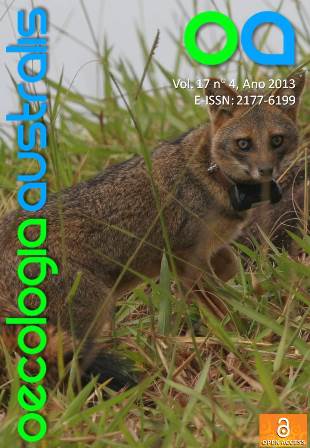NORTH WINTERING DISTRIBUTION, HABITAT USE AND REPRODUCTION OF THE TWO-BANDED PLOVER (CHARADRIUS FALKLANDICUS) IN BRAZIL
Palavras-chave:
Distribution range, reproduction, shorebird, wintering areaResumo
The Two-banded Plover (Charadrius falklandicus) ranges from the southern tip of South America, where it reproduces, to southern Brazil, where it winters. Censuses were conducted between 2007 and 2012 on the beaches and in the Lagoa do Peixe, and historical data were consulted in order to determine the distribution and abundance of Two-banded Plovers in southern Brazil and document the reproductive status of this species during the austral summer. During the winter period, from March to September, it occurs in greatest abundance in the Lagoa do Peixe National Park, Brazil, and can be found in densities of up to 4.4 individuals per hectare in the lagoon in March. Analysis showed lower bird abundances in high human impacted wintering sites. In the same way, the bird numbers were negatively correlated with the higher human impacted areas, but not significantly. In October 2011, we documented the first nest for this species near the lagoon, which in addition to sightings of young and adults with breeding plumage indicates that this region serves as a nesting area for part of the population during the summer breeding season.Downloads
Arquivos adicionais
- camiladebarros, OA_Scherer_Scherer & Petry_Charadrius falklandicus_Figure 1.doc
- camiladebarros, OA_Scherer_Scherer & Petry_Charadrius falklandicus_Figure 2.doc
- camiladebarros, OA_Scherer_Scherer_Petry_Charadrius falklandicus_Table 1.doc
- camiladebarros, OA_Scherer_Scherer_Petry_Charadrius falklandicus_Table 2.doc
- camiladebarros, covering_letter_Oecologia Australis.pdf
Publicado
2017-02-22
Edição
Seção
Notas Científicas


